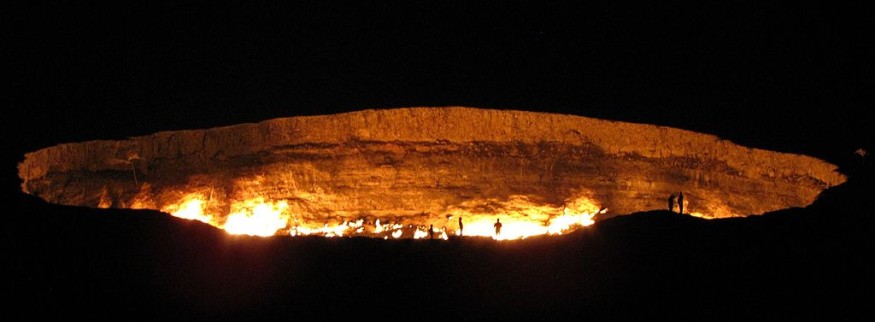The Darvaza gas crater in the Karakum Desert of Turkmenistan has been a site of the ongoing fire for approximately five decades.
Recent developments showed that scientists have joined Turkmen President Gurbanguly Berdymukhamedov's order in putting out the fire from the gateway to hell.
Drilling Holes

Drilling holes into the Darvaza gas crater can be tricky due to certain geological hazards posed by the proposed operation.
These threats may include the depth, the extreme environment, and the operational risks that can be encountered once people are underneath the surface.
In January, President Berdymukhamedov issued an order to close the site and instructed experts to find a way to extinguish the fire due to economic and environmental concerns, as per CNN.
The president cited that the country is losing valuable natural resources, which could be a potential profit.
Darvaza Crater: Origins
Officially known as the "Darvaza Crater" and internationally recognized as the "Gates of Hell", the site reportedly formed in the early 1970s when a Soviet Union gas drilling expedition led to the collapse of a ground, resulting in a massive hole that exposed methane underground, as per CNN.
Soviet scientists then blocked the gigantic crater with fire to prevent the spread of harmful natural gas.
It has continued to burn ever since.
Unlike other holes, the 230-foot-wide "door to hell" is no ordinary crater since the flames are reportedly fueled by flammable methane gas from underground reservoirs.
Tourist Site
Despite the hazardous risks, the crater in the Central Asian country has become a tourist site for both locals and international visitors.
No more than 10,000 tourists a year visit the site, according to Marek Grzegorczyk, as cited by the Smithsonian Magazine.
Closure of the Crater
Concerns raised by Berdymukhamedov the blaze of the crater may affect people living nearby.
However, Gianluca Pardelli, the founder of Soviet Tours, reportedly told Atlas Obscura that there are no people living near the crater.
Furthermore, other Turkmenistan officials supported the president, claiming that there are environmental benefits once the crater has been closed.
They reportedly explained that since the crater leaks methane gas, it damages the atmosphere and causes a waste of natural resources.
Natural Gas Deposits
Turkmenistan sits above one of the world's largest natural gas deposits and the resources are the main source of its economic revenue.
The country holds significant proven gas reserves.
Aside from methane, little is known about what lies underneath the crater, with unverified claims suggested it may contain gold and other mineral resources.
According to Turkmenistan's International Trade Administration, the country is rich in hydrocarbon resources and has a resource base of around 71.64 billion tons of oil in the Caspian Sea.
If methane is to be released from the crater, it can plausibly contribute to climate change and global warming by accelerating the natural process of the greenhouse gas effect.
The said gas is one of the primary greenhouse gases (GHG), along with carbon dioxide and nitrous oxide.
© 2025 NatureWorldNews.com All rights reserved. Do not reproduce without permission.





